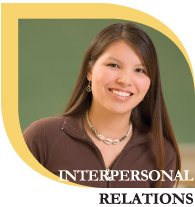Cultural Agility

Cultural agility is the ability to work respectfully, knowledgeably and effectively with Indigenous people. It is noticing and readily adapting to cultural uniqueness in order to create a sense of safety for all. It is openness to unfamiliar experiences, transforming feelings of nervousness or anxiety into curiosity and appreciation. It is examining one's own culture and worldview and the culture of the BC Public Service, and to notice their commonalities and distinctions with Indigenous cultures and worldviews. It is recognition of the ways that personal and professional values may conflict or align with those of Indigenous people. It is the capacity to relate to or allow for differing cultural perspectives and being willing to experience a personal shift in perspective.
Demonstrates the Behaviour When
- Accepts that other points of view are reasonable and valid
- Shows interest in learning Indigenous value systems and cultural protocols
- Gracefully acknowledges own shortcomings with regard to cultural agility
- Assesses and recognizes the impact of one's behaviour upon Indigenous people
- Shows flexibility in approach to achieve outcomes
- Recognizes diversity both between and within Indigenous cultures and communities
- Demonstrates quality service to Indigenous people by providing it within their cultural values and norms
- Takes into account the social and cultural conditions, norms and beliefs in assessing the credibility or plausibility of the actions of Indigenous people
- Demonstrates belief that Indigenous culture is valid and important
- Questions personal and organizational assumptions in a cultural context
- Proactively seeks to understand the experience of Indigenous people
- Seeks out Indigenous cultural experiences that are unfamiliar
- Takes risks to learn when in unfamiliar cultural situations
- Challenges bias and intolerance
- Addresses any personal issues with lack of confidence, nervousness or fear of "losing face" before attending ceremonies or events
- Addresses any religious conflict with ceremonies before the ceremony to ensure mutual respect
- Acknowledges the impact of colonial history on Indigenous people
- Allocates resources to Indigenous cultural learning and development for employees
- Shifts strategic direction when culturally indicated in order to achieve outcomes
Needs Development When
- Results of actions create shame or hostility in Indigenous people, either directly or indirectly
- With good intentions, violates cultural protocol or cultural identity
- Does not act or avoids tasks due to fear of violating cultural protocol
- Blames victims of historical processes for their current situation
- Acts to diminish the cultural identity of Indigenous people
- Operates from assumption that all Indigenous cultures and people are similar
- Assumes that all Indigenous people follow an Indigenous cultural tradition
- Actions reflect an assumption that Métis, First Nations and urban Indigenous issues and history are the same
- Learns about Indigenous cultures and people only when mandated
- Delivers service the same way regardless of cultural differences
- Avoids attending events, ceremonies or community gatherings because of lack of confidence, nervousness or fear of "losing face"
- Does not address any potential religious conflict with ceremonies before the ceremony
- Witnesses bias and intolerance and does not act
- Sticks to position regardless of the situation
- Maintains strategic direction regardless of cultural indicators that a shift is necessary
